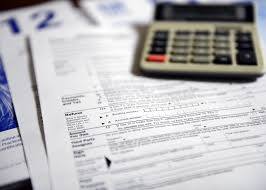
Form 1099-G is one of a series of "1099" forms used by the IRS to report various payments and financial transactions with the government, in addition to employee salaries.
Key points to note
Governments file Forms 1099-G if they make unemployment insurance payments, state or local income tax refunds, or other payments.
If you receive this form, you may need to include certain information on your income tax return.
The most common use of 1099-G is to report unemployment insurance and tax refunds at the state or local level.
Who needs to file Form 1099-G?
Form 1099-G must be submitted if you have received certain payments from a federal, state, or local government. The most frequent use of Form 1099-G is to report unemployment insurance and state and local income tax refunds. If you receive a Form 1099-G, you may need to report certain information when you complete your tax return.
What is Form 1099-G used for?
Federal, state, or local governments must submit Form 1099-G to indicate whether they have received loan payments from the Commodity Credit Corporation (CCC) or have paid out:
Agricultural payments
Reemployment trade adjustment assistance (RTAA)
Credits, state or local income tax refunds, or claims
Taxable subsidies
Unemployment insurance
Where to get form 1099-G
Suppose you have received unemployment insurance, offsets, credits, or refunds from local or state income tax or any of the other government payments listed. In that case, the IRS will send you a copy of Form 1099-G by January 31 of the year following the fiscal year. Additionally, if you have received unemployment insurance, you can access the online form by visiting your state's unemployment benefits website.
How to read Form 1099-G
The form's left side includes details about the payer (the government) and the recipient (you, the taxpayer), including tax identification numbers, names, addresses, and any associated account numbers. The right side of the form contains 11 boxes.
Box 1 (Unemployment benefits): This box shows the total Unemployment Insurance (including railway pensions board payments) received this year. If you get more than one 1099-G, combine the amounts in box 1 and report your tax return's total income.
Box 2 (State income or local income tax refunds, offsets, or credits): This box shows the refunds, credits, or receivables received from state or local income tax. This amount may be taxed if you deduct state or local income tax paid on Schedule A.
Box 3 (the value of box 2 is for the tax year): This box shows the fiscal year for which refunds, credits, or offsets were made in box 2. The field can be left blank if the refund, credit, or set-off relates to the current fiscal year.
Box 4 (Federal income tax withholding): This box shows the withholding tax or withholding tax for unemployment insurance, Commodity Credit Corporation (CCC) loans, or certain agricultural disaster payments.
Box 5 (RTAA payments): This box shows the payments you received for RTAA. Include this amount in the "Other income" line of Schedule 1.
Box 6 (Taxable subsidies): This box shows the taxable grants you received from government agencies.
Box 7 (Agricultural payments): This box shows taxable payments from the United States Department of Agriculture (USDA).
Box 8 (Checks if box 2 represents commercial income or trade): This box shows whether the value in box 2 refers to an income tax that applies only to income from a business or trade. If taxable, report the number in box 2 of Schedule C or F.
Box 9 (Market gain): This box shows any market gains associated with repaying a business credit loan (BCC) (only available to farmers).
Box 10a (State): This box shows the abbreviated name of the state.
Box 10b (identification number of the state): This box shows the state identification number.
Box 11 (State income tax withheld): This box shows the amount of income tax withheld by the state
Where to submit Form 1099-G
There are usually five copies of the Form 1099-G. When a Form 1099-G is filed by federal, state, or local government, the IRS receives copy A; the state tax department receives copy 1, you receive copy B. You also receive copy 2 to file the income tax return and declare your income if necessary. Copy C is sent to the payer or the filing agency. You may be required to report some of the information on Form 1099-G on your income tax return, but you do not need to send a copy of the return.
FOR MORE INFORMATION OR TO MAKE AN APPOINTMENT TO SEE HOW WE CAN HELP YOU WITH YOUR TAX FILING NEEDS, PLEASE CONTACT Tucker Accounting Services LLC, BY CLICKING THE BLUE TAB ON THIS PAGE.
THANKS FOR VISITING.
